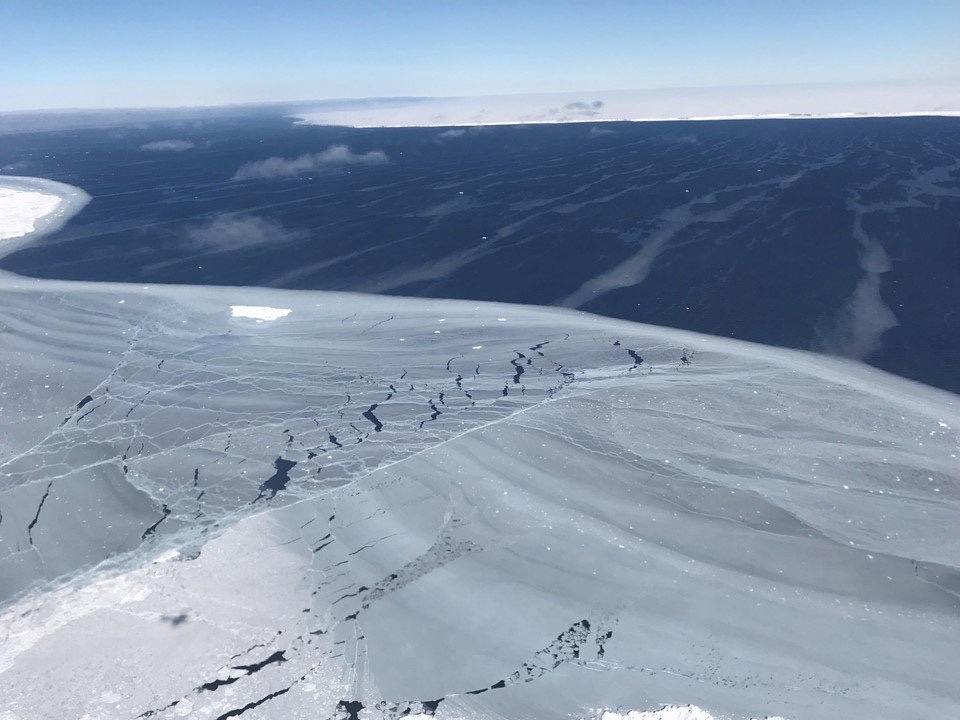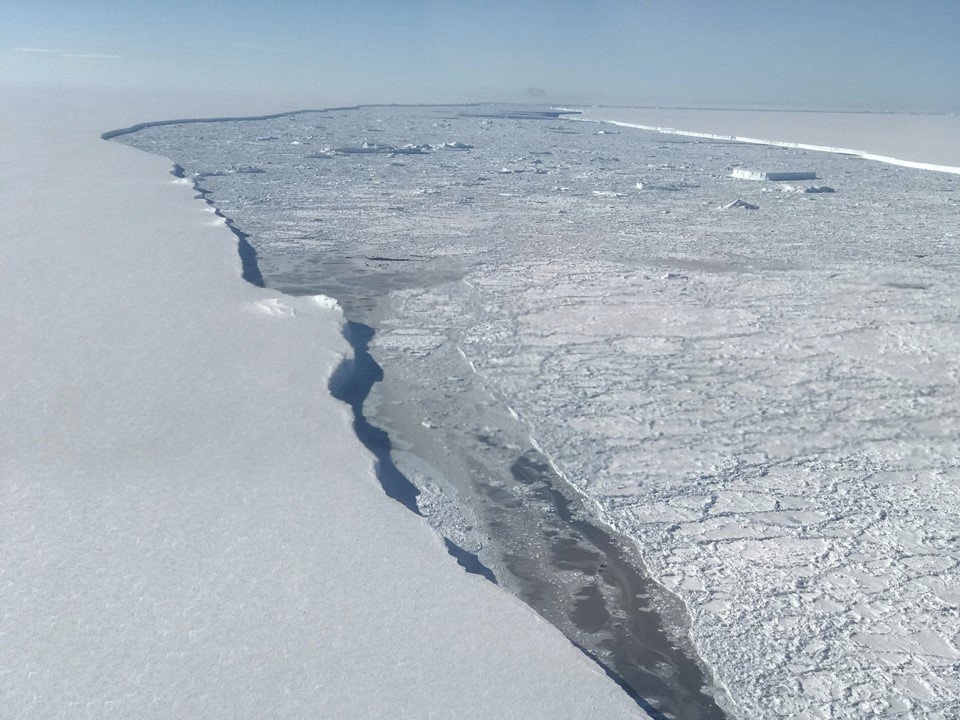Scientists Rush to Explore Underwater World Hidden Below Ice for 120,000 Years

A huge, trillion-ton iceberg about the size of Delaware broke free from Antarctica's Larsen C Ice Shelf in July 2017. As it moved away from its chilly birth mom and into the Weddell Sea, a vast expanse of water saw the light for the first time in up to 120,000 years.
And this month, a team of scientists will venture to the long-ice-buried expanse to investigate the mysterious ecosystem that was hidden beneath the Antarctic ice shelf for so long.
The newly exposed seabed stretches across an area of about 2,246 square miles (5,818 square kilometers), according to the British Antarctic Survey (BAS), which is leading the expedition. The scientists consider their journey "urgent," as they hope to document the system before sunlight begins to change at least the surface layers. [In Photos: Antarctica's Larsen C Ice Shelf Through Time]
"The calving of [iceberg] A-68 [from the Larsen C Ice Shelf] provides us with a unique opportunity to study marine life as it responds to a dramatic environmental change. It's important we get there quickly before the undersea environment changes as sunlight enters the water and new species begin to colonize," Katrin Linse, of the British Antarctic Survey, said in a statement.
What lies beneath?
Scientists know little about the possibly alien-like life that has taken up residence beneath Antarctica's ice shelf. What they do know comes from similar calving events in the past: Chunks of ice broke off the Larsen A and B shelves (located north of Larsen C on the Antarctic Peninsula) in 1995 and 2002, respectively. Two German expeditions to those "newly" exposed areas revealed sparse life. However, it took five to 12 years for the expeditions to make it to those areas, and by that time creatures from other areas had made their way to both spots, Live Science previously reported.
In other icy realms around Antarctica, some bizarre creatures have turned up. For instance, a bristled marine worm that lives in the Southern Ocean, and Live Science previously reported as looking like a "Christmas ornament from hell," has an extendable throat tipped with pointy teeth. And some creatures have made a living under extreme conditions, including a crustacean called Lyssianasid amphipod, which was found thriving beneath the Ross Ice Shelf in western Antarctica. One of the more famous Antarctic animals, the icefish has natural antifreeze in its blood and body fluids, allowing it to survive the frigid temperatures of Earth's chilly bottom.
Get the world’s most fascinating discoveries delivered straight to your inbox.
To explore the once-hidden ecosystem, the scientists — hailing from nine research institutes — will set off from the Falkland Islands on Feb. 21. They plan to spend three weeks aboard the BAS research ship, the RRS James Clark Ross. To navigate the ice-filled water to the remote location, the ship will rely on satellite data, according to the BAS.
Once they arrive, the team plans to collect samples of life (seafloor animals, microbes, plankton and any other inhabitants) as well as sediments and water.
Stay tuned.
Originally published on Live Science.
Jeanna Bryner is managing editor of Scientific American. Previously she was editor in chief of Live Science and, prior to that, an editor at Scholastic's Science World magazine. Bryner has an English degree from Salisbury University, a master's degree in biogeochemistry and environmental sciences from the University of Maryland and a graduate science journalism degree from New York University. She has worked as a biologist in Florida, where she monitored wetlands and did field surveys for endangered species, including the gorgeous Florida Scrub Jay. She also received an ocean sciences journalism fellowship from the Woods Hole Oceanographic Institution. She is a firm believer that science is for everyone and that just about everything can be viewed through the lens of science.



